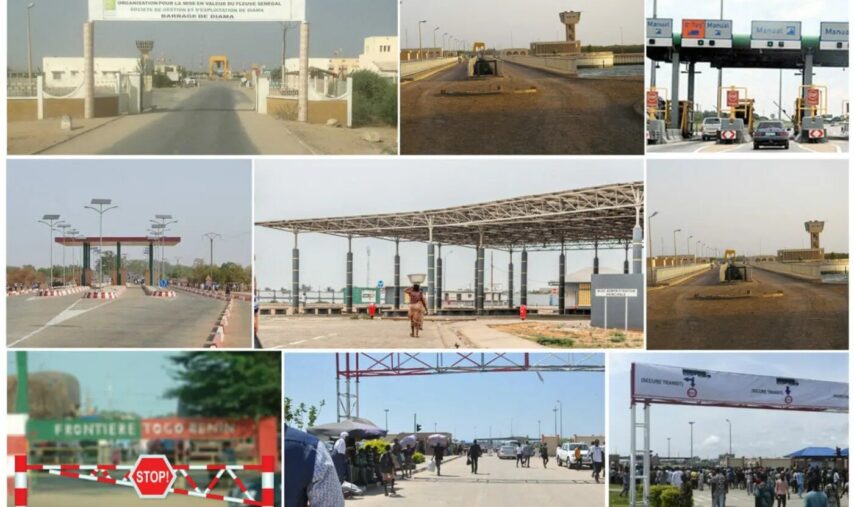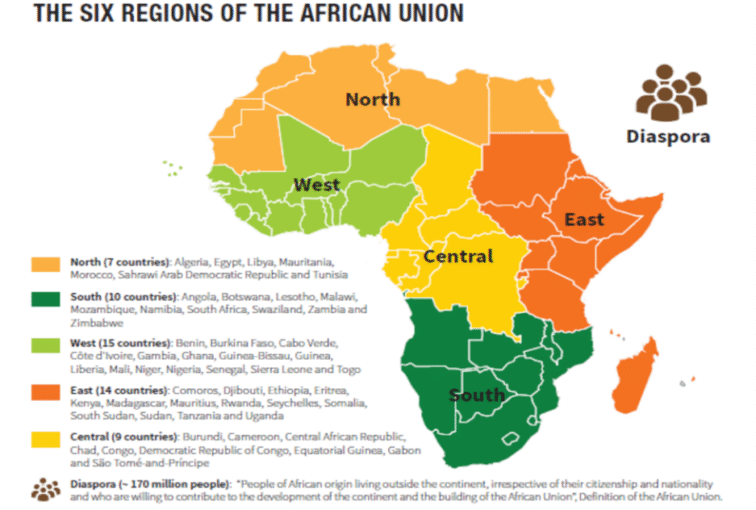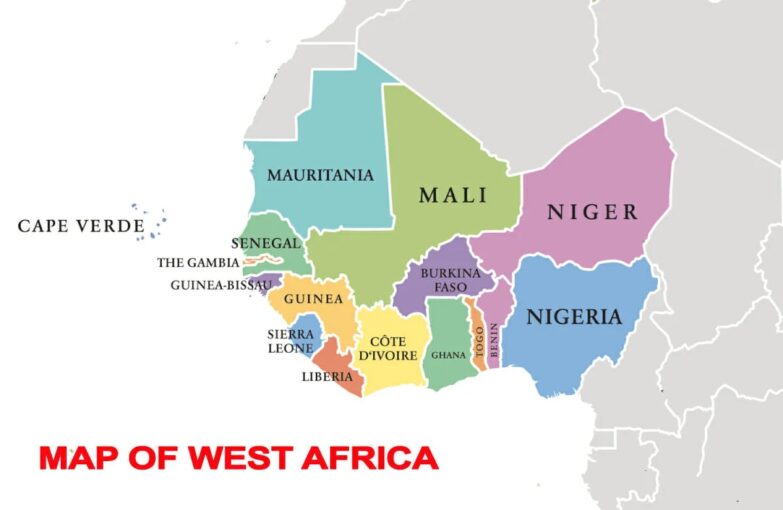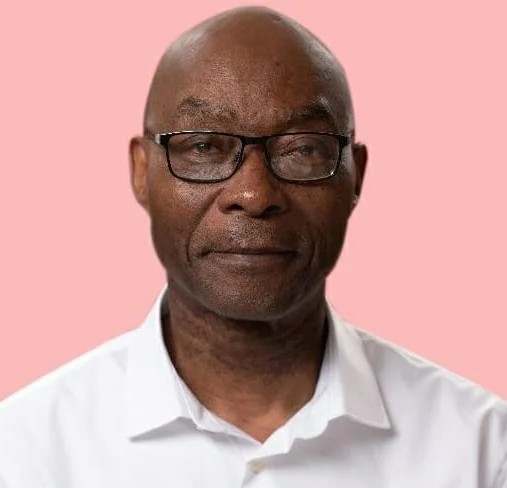Africa must take its destiny into its own hands

Trump’s suspension of US aid rang the bell: Africa must take its destiny into its own hands
President, Movement of Sahelo-Guinean Federalists (MFSG)
The need for a leap forward
The 70 years of European colonialism have left a seemingly indelible mark on the governance of African states. Despite the independence of the 1960s and 1970s, our dependence on development aid remains too high and puts us in a very vulnerable position. The pattern of economic exchanges between the world and sub-Saharan Africa has remained the same for several centuries. The export of goods with low added value and the import of manufactured products from industrialized countries create a structural deficit that is at the main root of the poverty of our states. Development aid is neither sufficient nor adequate to fill the gap.
Despite the evidence of this diagnosis, our countries, by dint of habit, have developed an addiction to aid. The global plans to “save Africa,” the structural adjustment programs have followed one another and have proven to be ineffective for a simple reason: no one but ourselves can save us. This statement is also obvious. But what’s after? The election of President Donald Trump in 2024 and his decisions to drastically reduce development aid, the resurgence in Europe of an extreme conservatism, the rise of the presence in Africa of new powers such as Russia and China, and the numerous wars of destabilization of our states fueled by the trafficking of raw materials, narcotics, weapons and human trafficking are sounding the alarm bell for an awakening of the African elites.
To face these challenges Africa must launch ambitious changes
Recently, the European Union has been painfully facing what it perceives as a betrayal of the new Trump administration. Accustomed to depending on the US for its defense, it is waking up groggy by the upheaval of alliances underway with a new USA-Russia axis. Worse, the new US economic policy is at odds with transatlantic economic cooperation and multilateralism, emphasizing protectionism. In reaction to this new situation, voices are being raised in a divided Europe to call for similar action through European protectionism. But it is not impossible that the tariff barriers put in place by the Trump administration will lead to a hemorrhage of European industry towards the United States. Europe, which has long dominated the African states, its former colonies, finds itself, in turn, in a situation of great precariousness linked to a risk of political and economic downgrading.
The impact of this situation on many African countries is potentially major because too many states in Africa remain dependent on Europe for their imports of manufactured goods, which makes it difficult for our countries to industrialize. The pressure of some European states on African leaders to consolidate their captive markets in Africa is likely to increase. At the same time, the emerging powers do not hesitate to provide an alternative to African governments in order, they say, to allow them to diversify their economic partnerships. In reality, each great or regional power seeks its own personal interests and African states must put themselves in a position to choose freely according to the interests of their peoples. However, the fragmentation of Africa is a major weakness. Our States will therefore continue to find themselves, more than ever, the prey of external powers in an international context marked by protectionism and the reconstitution of geopolitical and economic spheres of influence. Faced with this peril, African states can no longer afford to walk the slippery path of every man for himself. They must develop new ambitious strategies based on a regional pooling of economic development potential and on the establishment of strong political integration in order to allow a real synergy of the efforts currently being made in a dispersed manner. The survival of our populations is at stake.

A new Pan-Africanism: starting from the existing to promote an innovative architecture
By building on the existing architecture, it is possible to make a decisive leap forward to build a new architecture of our countries. With a population of 1.3 billion, sub-Saharan Africa is close to the demographic ranks of India and China and has one of the highest growth rates in the world. Its population could triple by the end of the century. To create the jobs needed for its young population, sub-Saharan Africa needs to make its economy dynamic and attractive. This implies sustainable and robust industrialization, which is not possible in the current state of fragmentation with its 47 states.
If we refer to the subdivision by the African Union, sub-Saharan Africa includes the following four sub-regions: West Africa, Central, East and Southern Africa. Each of these sub-regions has one or more economic integration organizations. Unfortunately, the economic objectives have not been achieved because the “logic of every man for himself” prevails, keeping Community trade at a low level. However, the geographical and demographic narrowness of many states only allows them to industrialize by joining global value chains. However, with the trend towards protectionism, the long-vaunted globalization is in decline, thus making the strategy of integrating small states into the global market vulnerable.
It is therefore imperative that the industrialization of our states be based mostly on a local market, the one that would allow a regional political integration, respectful of the states within their current limits but pooling certain attributes and functions, namely:
- Geographical space through the abolition of state borders for a true freedom of movement of goods and people.
- Collective security, through the organization of a federal army sufficiently seasoned and equipped to ensure respect for the sovereignty of the federated states.
- Justice, through the creation of a federal court and the harmonization of judicial procedures and the rule of law.
- Diplomacy, to strengthen Africa’s presence in negotiations with the outside world.
- The economy and social issues, through the harmonization of the economic strategies of the federated states and the adoption of common and progressive social norms.
To be effective, each of the four federations must be decentralized and scrupulously respect the sovereignty of each federated state over its natural resources. In return, for the provision of a local market, the federated states must agree on the principle of progressive equalization between rich and less wealthy states in order to achieve common economic prosperity in the long term.
A pragmatic and progressive approach: the case of West Africa
The proposed approach is not utopian. It must be the result of a pragmatic process based on the proactive transformation of the existing system. We would like to illustrate this with the case of West Africa. This sub-region includes the following 15 countries: Benin, Burkina Faso, Cape Verde. Côte d’Ivoire, Gambia, Ghana, Guinea, Guinea Bissau, Liberia, Mali, Niger, Nigeria, Senegal, Sierra Leone, Togo. Nigeria is a centralized federation made up of 36 states. Since 2025, ECOWAS has brought together 12 states, following the departure of Burkina Faso, Mali and Niger, which created the Confederation – Alliance of Sahel States (AES). On the other hand, the eight former French colonies are members of the West African Economic and Monetary Union (WAEMU), which has a central bank, the Central Bank of West African States (BCEAO).
To achieve the creation of the Federation of West African States, we envisage the following three stages:
- Step 1: By 2040, Nigeria decentralizes and allows each of its federated states to play a greater role in the management of its natural resources and establishes greater solidarity between the federated states; the other 14 West African states formed a new federation, the Sahelo-Guinean Federation (FSG) is formed after the end of France’s influence on the WAEMU and the reception in this organization of the following countries: Cape Verde, Gambia, Ghana, Guinea, Liberia, Sierra Leone. The restructured WAEMU is then transformed into a federation.
- Step 2: By 2045, the two federations, namely the decentralized Nigeria and the Sahelo-Guinean federation, form the Confederation of West African States.
- Step 3: Beyond 2045, the confederation is gradually transformed into a decentralized federation of 50 federated states, each with sovereignty over its own natural resources but with a critical mass of consumers for resilient industrialization.
-

Map of West Africa
Call for action
The time is no longer for wishful thinking and agitation. It is possible to get out of it by putting an end to the fragmentation that handicaps our development. To do this, we must put an end to the armed conflicts that darken our horizon, the war in the Democratic Republic of the Congo in which Rwanda is involved, the war in Sudan and the asymmetric wars in the Sahel. It is with a sense of urgency to act that we created the Movement of Sahelo-Guinean Federalists (MFSG) in August 2022, which aims to support this vision. Through this article, we call on political leaders, economic actors and citizens to support our action by adhering to it or by any other legal means in order to contribute to the realization of this great ambition for future generations.
2045 is in 20 years, it’s tomorrow. The action must start now.
__________

Dr. Edgard Gnansounou is an honorary Professor of The Swiss Federal Institute of Technology Lausanne, Ecole Polytechnique Fédérale de Lausanne (EPFL), Switzerland, and President of the Movement of Sahelo-Guinean Federalists, an international association that is promoting grouping the 47 Sub-Saharan states into 4 decentralized federations to foster their resilient, sustainable and robust industrialization.

